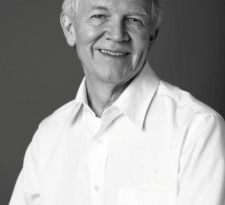Angioplasty & Stents
Percutaneous Coronary Intervention (PCI)
Outlook
Recovery from angioplasty and stenting is typically brief. Discharge from the hospital is usually 12 to 24 hours after the catheter is removed. Many patients can return to work within a few days to a week after a procedure.
What to expect at home
After an interventional procedure, it’s normal for you to experience the following:
- A bruising or discolored area near where the catheter was inserted (either the groin or wrist) – At the same site, there may also be a small lump (which should not get bigger), soreness when pressure is applied, and perhaps a small amount (one or two drops) of discharge from the site.
- Feeling more tired than usual for several days – If your procedure was performed during a heart attack, tiredness will last longer, perhaps as long as six weeks, which is the time it usually takes for healing after a heart attack.
- Bruising even with light pressure or minor trauma – This results from the blood thinners you're receiving for your stent.
When to call your doctor
Call your doctor if you experience any of the following issues:
- Chest pain like you felt before the procedure or during it when the balloon catheter was inflated in your artery – Some patients have chest pain lasting one to two seconds. Typically, they say it feels different from the pain they felt before the procedure. These brief pains are often muscular and aren’t related to blockages in the heart.
- A puncture wound in your leg or arm (the access site) that gets bigger, turns red, drains a thick yellow/brown material, or is painful, even when no pressure is applied – A larger, painful lump may be a sign that the puncture hole isn’t healing properly or is leaking blood.
- Fever
- Swelling with or without pain – If you experience swelling anywhere in the leg or arm in which the catheter was inserted, this could indicate that there’s an issue that needs prompt attention.
Stories of Hope and Recovery

Peter Millard received transcatheter aortic valve replacement (TAVR) for Shone’s complex with care from an interventional cardiologist.
Activities after the procedure
Always follow your doctor’s instructions about the activity level appropriate for you. A general guide is as follows:
- For the first five days, do only light activities – Walking, climbing stairs, and taking care of routine activities are usually fine. After five days, your doctor will likely say you can resume moderate activities, but you should avoid overexertion that leads to shortness of breath, tiredness, or chest pain.
- Wait until three to four weeks before lifting heavy objects or doing strenuous exercise – Get clearance from your doctor before very strenuous activity or manual labor.
- If it isn't mentioned in your discharge visit, talk to your doctor about cardiac rehabilitation, which may be appropriate once you've had an outpatient visit with your cardiologist.
Follow-up care
Once you leave the hospital after your procedure, your care will be twofold. You’ll need to take care of yourself by taking medications exactly as prescribed by your doctor and making lifestyle changes such as exercising, improving your diet, and quitting smoking (if you smoke). You should also have at least one follow-up appointment with your treating interventional cardiologist or another qualified specialist if you cannot return to your treating doctor. At this appointment, your interventional cardiologist will examine the catheter insertion site to be sure it’s healing properly.
Occasionally, your doctor may also ask you to take an exercise stress test three to six weeks after your procedure. The test results will help guide your doctor in recommending an appropriate activity level for you. The results may lead to a recommendation to enroll in an exercise program supervised by health professionals. Supervised cardiac rehabilitation programs (as mentioned above) are designed to help you build a stronger heart and reduce risk factors for more blocked arteries in the future. They're even associated with improved survival after a heart attack.